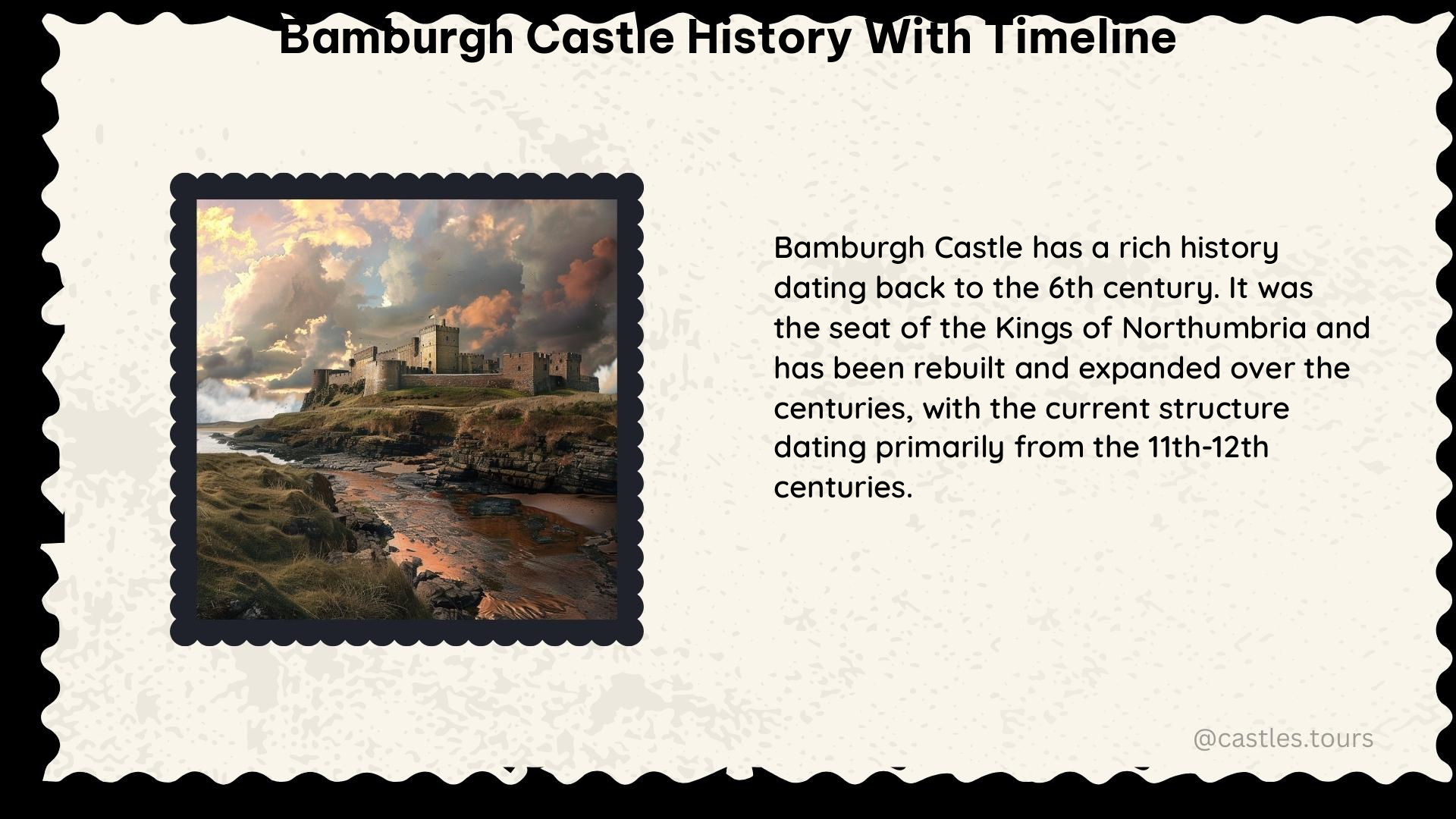Bamburgh Castle, a majestic fortress perched atop a rocky outcrop in Northumberland, England, has witnessed the ebb and flow of history for over 1,400 years. From its origins as a stronghold of the Anglo-Saxon kingdom of Northumbria to its transformation into a grand, modern-day castle, this iconic landmark has captivated visitors and historians alike.
The Beginnings of Bamburgh Castle
The fortifications at Bamburgh were first captured by the Anglo-Saxon ruler Ida of Bernicia in AD 547, marking the beginning of the site’s association with the Anglo-Saxon kingdom of Northumbria. Prior to this, the site, known as Din Guarie, may have been the capital of the kingdom of Bernicia, the realm of the Gododdin people.
In the 6th century, the fort was briefly retaken by the Britons from Hussa during the war of 590 before being reclaimed later that same year. Hussa’s successor, Æthelfrith, passed the fort on to his wife Bebba, from whom the early name Bebbanburh was derived.
The Norman Conquest and Beyond

The original fortification was destroyed by Vikings in 993, but the Normans built a new castle on the site in 1095, which forms the core of the present-day structure. During this time, the castle was the subject of a failed siege by William II, who was attempting to quell a revolt supported by its owner, Robert de Mowbray, Earl of Northumbria.
The keep of the castle was likely built by Henry II and was complete by 1164. In 1191, King Richard I appointed Sir John Forster as the first Governor of Bamburgh Castle, a reward for his service.
Prisoners and Ruination
In 1346, King David II of Scotland was held prisoner at Bamburgh Castle following the Battle of Neville’s Cross. During the 1600s, the castle fell into ruin and private hands, those of the local Forster family. It later became a hospital and a school.
The Armstrong Era
In 1894, the visionary inventor, industrialist, and philanthropist William George Armstrong bought Bamburgh Castle and set about transforming it into his vision of the archetypal castle. Today, the castle is a Grade I listed building and is open to the public, with entrance charges applying.
The castle is owned by the Armstrong family and is open daily from 10.00 to 17.00 (last admission 16.00) from February to November, and on weekends only from 11.00 to 16.30 (last admission 15.30) from October to February.
Conclusion
Bamburgh Castle’s rich history, spanning over 14 centuries, is a testament to the enduring power of this iconic landmark. From its origins as a fortification in the Anglo-Saxon kingdom of Northumbria to its transformation into a grand, modern-day castle, Bamburgh Castle has captivated visitors and historians alike. Whether you’re a history buff or simply seeking a breathtaking view, a visit to Bamburgh Castle is sure to leave a lasting impression.
References:
– Britannica – Bamburgh Castle
– TimeRef – Bamburgh Castle
– Bamburgh Castle Official Website
– Historic UK – Bamburgh Castle
– Wikipedia – Bamburgh Castle
